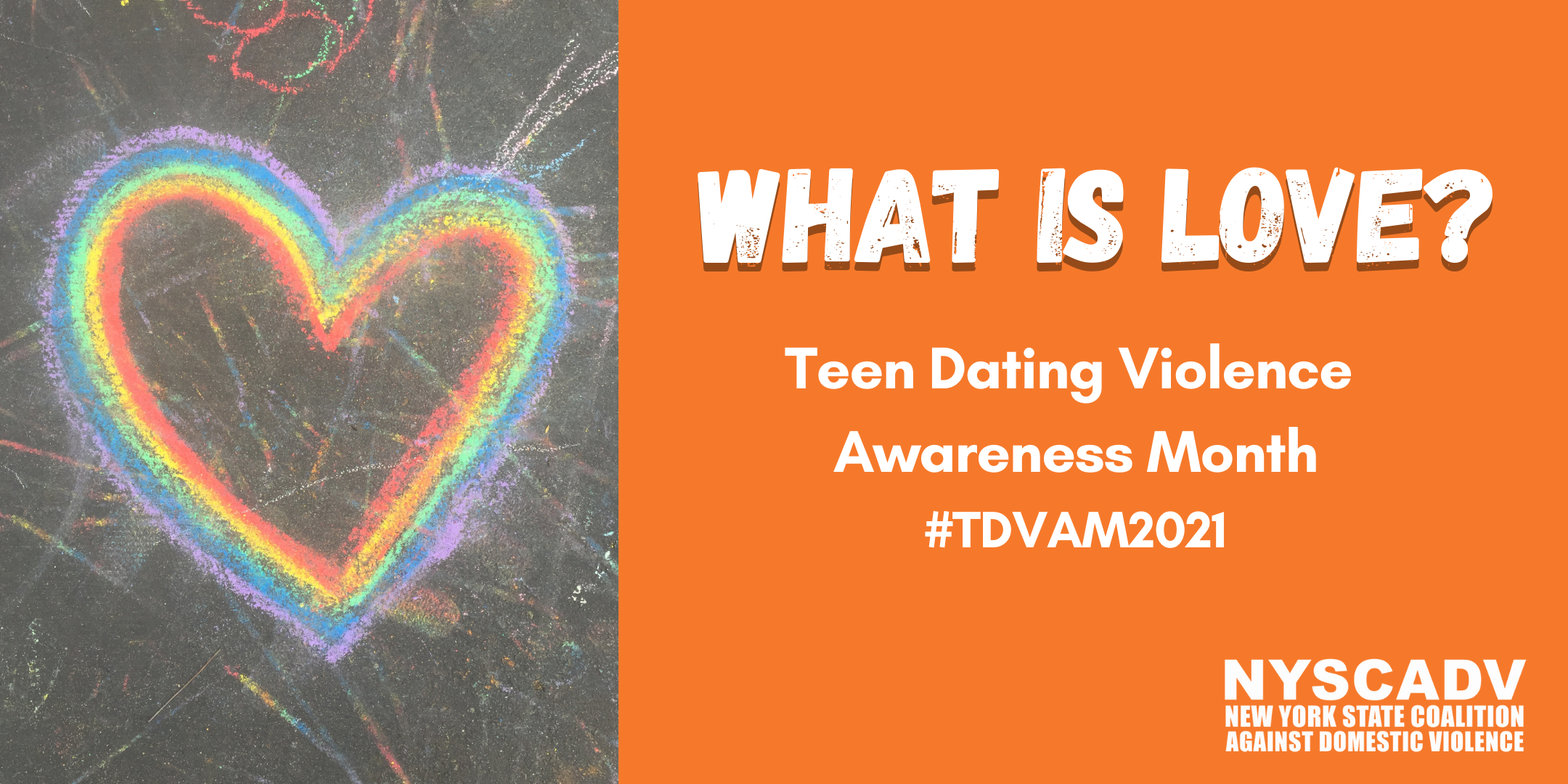
February is Teen Dating Violence Awareness Month (TDVAM). This month is dedicated to raising awareness about teen dating violence and to promoting healthy relationship behaviors.
Teen dating violence is more common than many people think. The CDC’s Youth Risk Behavior Survey and the National Intimate Partner and Sexual Violence Survey data indicated that, in the U.S., approximately 1 in 4 females and 1 in 7 males experience intimate partner violence under the age of 18. Teen dating violence is an issue that affects everyone; not just teens, but also their families and the climate of their schools and other settings where youth congregate. Our youth are our most precious resource. Together, we can work to identify, address and prevent teen dating violence; in doing so, we can create a future that is free of violence. In our homes and in our communities.
But what is teen dating violence? Teen dating violence includes the very same behaviors that occur in adult intimate partner violence. It is a pattern of coercive behavior/tactics used by someone against their intimate partner in an attempt to gain or maintain power and control. Types of abuse can include, but are not limited to, physical, sexual, psychological, and technological. According to the CDC, 1 in 11 female high school students and about 1 in 15 male high school students reported having experienced physical dating violence in 2017. In the same year, 1 in 9 female high school students and 1 in 36 male high school students reported having experienced sexual dating violence.
Additionally, technology is increasingly being used as a tactic of abuse and a method of control. According to the 2007 Tech Abuse in Teen Relationships Study commissioned by Liz Claiborne:
- 1 in 4 teens in a relationship say they have been called names, harassed, or put down by their partner through cellphones & texting.
- 1 in 5 teens in a relationship have been asked by cellphone or the internet to engage in sexual activity when they did not want to.
- Nearly 1 in 5 say their partner used a networking site to harass or put them down.
Increasing education and awareness about the prevalence of teen dating violence and describing the kinds of abusive and controlling tactics to be aware of can help people to identify teen dating violence and respond appropriately. Only by raising awareness of the issue can family, teachers, and other adult influencers in the community be able to step up and step in to provide support and services.
Responding appropriately to abuse that has already occurred is just one aspect of our work. Our goal must be to prevent teen dating violence from ever happening in the first place. This is commonly referred to as Primary Prevention. By using prevention strategies that promote healthy parent-child relationships, respectful friendships, and dating relationships premised on consent and respect, we can create a world free from gender based violence.
If you, or someone you know is being hurt or controlled by a dating partner, you can get help and access services by calling the New York State Domestic Violence Hotline at 1-800-942-6906
Resources
- To learn more about prevention, visit NYSCADV’s prevention toolkit by clicking here: https://www.nyscadv.org/what-we-do/primary-prevention.html.
- For more information on teen dating violence, you can visit:
- PreventIPV. Check out this searchable collection of resources generated in the field. It includes training tools, campaigns, promising programs, evidence, policies, and other materials that can be adapted in your community to advance the prevention of intimate partner violence.
- Dating Matters®: Strategies to Promote Healthy Teen Relationships. Dating Matters is an evidence-based teen dating violence prevention model developed by the CDC that includes prevention strategies for individuals, peers, families, schools, and neighborhoods.
- Futures Without Violence. Futures Without Violence is a nonprofit organization that develops and advances groundbreaking prevention strategies to prevent teen dating violence and promote healthy relationships.
- Love Is Respect. Love Is Respect is a national resource to disrupt and prevent unhealthy relationships and intimate partner violence by empowering young people.
- To learn more about how you get can involved during TDVAM, check out Love Is Respect’s action guides and social media toolkit:
- Find a domestic violence program near you by visiting NYSCADV’s provider directory here: https://www.nyscadv.org/find-help/program-directory.html


